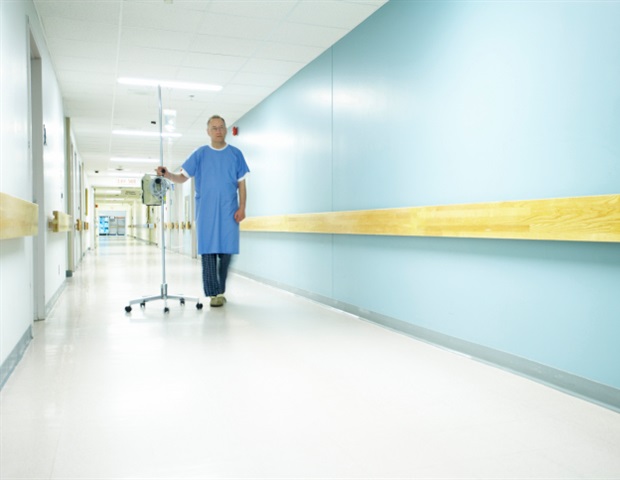Your doctor may prescribe certain treatments, like nonsteroidal anti-inflammatory drugs and physical therapy, to help your ankylosing spondylitis. But everyone is different: What works for someone else might not work for you. If this happens, your doctor will most likely recommend that you try a new class of drugs known as biologics.
“These are amazing drugs that have really revolutionized how we treat this disease,” says Yale Medicine rheumatologist Deborah Desir, MD.
Though they won’t magically cure your ankylosing spondylitis, they can help slow the disease’s progression and make symptoms more manageable.
How Do Biologics Work?
Biologics stop the damaging inflammation that happens with ankylosing spondylitis.
“They’re genetically engineered proteins that target cytokines, specific molecules in your immune system,” says Lianne Gensler, MD, director of the University of California San Francisco’s Ankylosing Spondylitis Clinic.
Cytokines activate inflammation throughout your body, which keeps your immune system on its toes to fight off invaders. But if they go into overdrive, they can trigger inflammatory diseases such as ankylosing spondylitis.
There are two main classes of biologics used to treat ankylosing spondylitis:
Tumor necrosis factor alpha (TNF-α) inhibitors. These were the first approved in 2003. They work not only to ease joint inflammation, but related inflammation in the gut and eyes as well. There are five approved for ankylosing spondylitis:
- Adalimumab (Humira)
- Certolizumab (Cimzia)
- Entanercept (Enbrel)
- Golimumab (Simponi)
- Infliximab (Remicade)
IL-17 inhibitors. Two are FDA-approved for ankylosing spondylitis: ixekizumab (Taltz) and secukinumab (Cosentyx). They target different cytokines than the TNF inhibitors. They’re often used in people whose ankylosing spondylitis didn’t respond to several of the TNF medications.
Who Should Take Biologics?
While biologics are very effective, they’re not for everyone.
“These drugs are very powerful, but they also suppress the immune system, which means you’re more vulnerable to infection,” Gensler says. Because of this, most doctors hold off using them right away.
When you’re newly diagnosed with ankylosis spondylitis, your doctor will most likely start you on a course of nonsteroidal anti-inflammatory drugs (NSAIDS). These include over-the-counter versions such as ibuprofen, as well as prescription-strength drugs like celecoxib (Celebrex).
“These drugs are the most common ones we use, and for good reason: a huge percentage of patients are able to get control of their symptoms on them,” Desir says.
They’ll also prescribe physical therapy to help ward off the “frozen” spine and general stiffness that can occur with ankylosis spondylitis.
The downside of NSAIDs is that to stay symptom-free, most people need very high doses. Over time, this can lead to side effects such as stomach bleeding and higher risk of heart attack or stroke.
“We’re most worried about these side effects in older adults, since they are the ones who are already at risk for these diseases. But for a younger patient in their 20s or 30s newly diagnosed with the condition, that’s much less of a concern,” Gensler says. “We don’t have long-term safety data on biologics yet beyond about 2 decades, so it’s still unknown what the effects of these drugs would be on patients who are on them for most of their lives. That’s why we’d prefer to start with an NSAID, and then escalate if need be.”
In general, Gensler says you should consider a biologic if:
- You’ve tried a course of NSAIDs and physical therapy for a few weeks and are still bothered by symptoms.
- Your X-rays already show that you have a lot of damage to your sacroiliac joints, the joints that connect your spine to your pelvic bone.
- You’ve already lived with ankylosis spondylitis for a long time.
It can sometimes take up to 10 years for people to be diagnosed with this condition.
“Sometimes patients come in for the very first visit in extreme pain and very disabled, and they say that their quality of life is terrible and they’d do anything to get it back to where they can function again,” Gensler says.
What Should I Expect When I Take a Biologic?
If you and your doctor agree biologics are the next step, they’ll test you for tuberculous first.
“Some people have what’s known as latent TB, where the bacteria live silently in their lungs,” Desir says. “Since these drugs suppress your immune system, the TB can ‘wake up’ and cause an actual infection.”
All biologic treatments leave you more prone to infection, especially upper respiratory infections such as colds, flu, or COVID-19. To stay healthy, you should:
- Wash your hands often
- Avoid or wear a mask in crowded areas, enclosed spaces, public transportation, and childcare facilities
- Keep up to date on all your vaccines, including the flu and COVID-19 vaccines.
Some biologics are given at home via self-injection, and others are given through an IV in your doctor’s office. You may notice some pain, redness, and swelling. You can use antihistamines and an over-the-counter pain reliver such as acetaminophen to treat discomfort.
If you’re on the fence about trying a biologic, Gensler suggests giving it a 3-month trial.
“I stress to (people) that this does not have to be a lifetime commitment. They can always go off of the biologic and return to their original medications,” she says. “But oftentimes, after a few months, people are shocked at how much better they feel. They’ve suffered for so long they’ve just accepted their symptoms as normal. But thanks to biologics, it doesn’t have to be that way anymore.”






